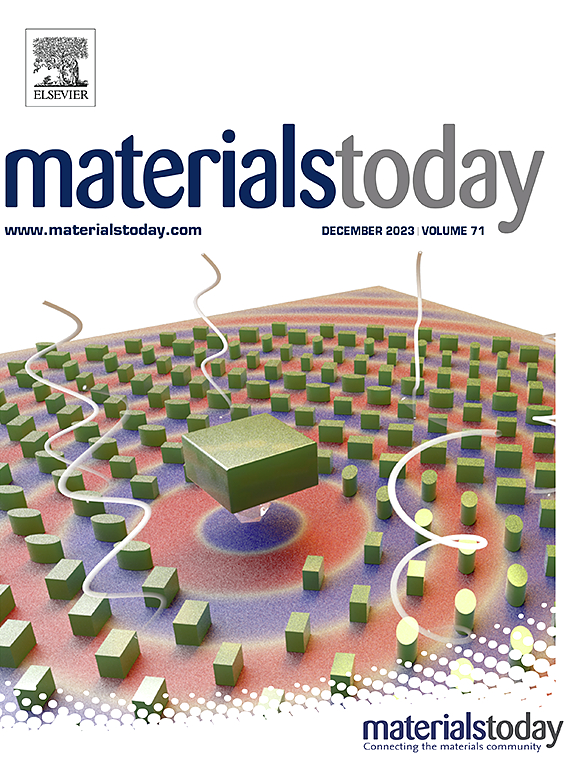Cascaded fingerprint recognition for non-alcoholic steatohepatitis imaging
IF 21.1
1区 材料科学
Q1 MATERIALS SCIENCE, MULTIDISCIPLINARY
引用次数: 0
Abstract
Non-alcoholic steatohepatitis (NASH) represents a critical stage within metabolic dysfunction-associated fatty liver disease (MAFLD), spanning from mere steatosis to cirrhosis. Timely and accurate diagnosis is of paramount importance for disease monitoring and effective therapeutic intervention. However, the current gold standard for diagnosis in clinical settings, biopsy, is hindered by its invasiveness and sample variability. The lack of reliable noninvasive diagnostic methods has created an urgent need for the development of innovative imaging techniques, particularly those utilizing activatable fluorescent probes capable of recognizing multiple NASH-specific fingerprints. Recognizing that inflammation and lipid droplet accumulation are fingerprints of NASH, we have engineered a molecular probe, TBPB, which is specifically designed to trigger a fluorescence turn-on response only when these two most cardinal features coexist. This unique cascaded fingerprint recognition strategy of TBPB holds immense potential for enhancing the specificity and sensitivity of NASH diagnosis. Through a series of in vitro studies, we have demonstrated that TBPB exhibits a robust response in NASH-mimicking scenarios and could selectively activate its fluorescence signal in the presence of both inflammation and lipid droplet accumulation. Furthermore, our in vivo studies have provided compelling evidence for the translational potential of TBPB, showcasing its ability to accurately diagnose NASH in animal models.

求助全文
约1分钟内获得全文
求助全文
来源期刊

Materials Today
工程技术-材料科学:综合
CiteScore
36.30
自引率
1.20%
发文量
237
审稿时长
23 days
期刊介绍:
Materials Today is the leading journal in the Materials Today family, focusing on the latest and most impactful work in the materials science community. With a reputation for excellence in news and reviews, the journal has now expanded its coverage to include original research and aims to be at the forefront of the field.
We welcome comprehensive articles, short communications, and review articles from established leaders in the rapidly evolving fields of materials science and related disciplines. We strive to provide authors with rigorous peer review, fast publication, and maximum exposure for their work. While we only accept the most significant manuscripts, our speedy evaluation process ensures that there are no unnecessary publication delays.
 求助内容:
求助内容: 应助结果提醒方式:
应助结果提醒方式:


